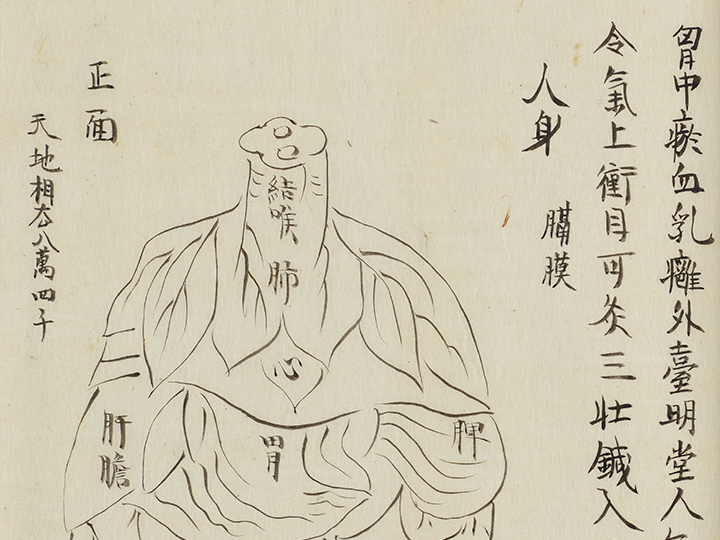Different medical traditions describe and understand the human body in vastly different ways. Chinese medicine holds that the human body is covered with acupuncture points that are joined in pathways transporting vital energy to the organs and the meridian system. As the acupuncture points correspond to internal organs, disorders of the organs and associated pain can be relieved by stimulating the points through insertion of needles or moxibustion therapy. Medical texts displayed in this section include Xuanmen Maijue Neizhao Tu (Methods of Diagnosing and Treating Diseases through Viscera), Wuzang Cidi Tu (Drawings of the Five Viscera), Qipo Wuzangjing (Jivaka's Five Viscera Classic), the Korean Dongui Bogam (Priceless Book about Medicines of an Eastern Country) and Xiyuanlu (Records of the Washing Away of Wrongs). Not only do they provide an overview of how traditional practitioners of Chinese, Japanese, Buddhist, Taoist and forensic medicine looked at the human body, but also set forth acupuncture theories from traditional Chinese medicine and modern Japanese medicine. Visitors to this section will get a glimpse into how people over the last two millennia have understood the human body, and how different medical cultures have cross-pollinated.
:::



